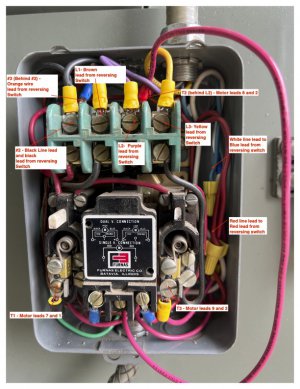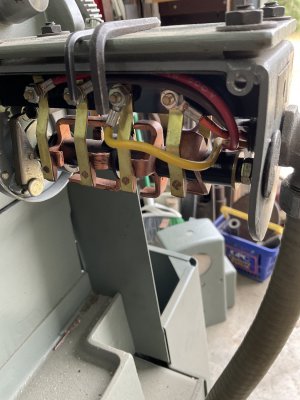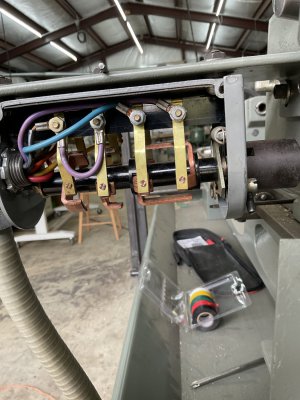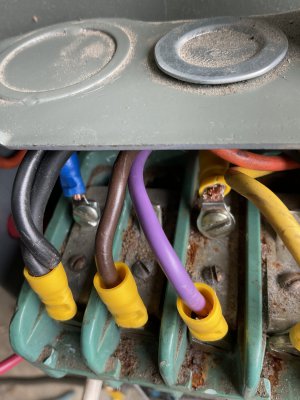I have a Clausing 4903 with the 7130 magnetic starter option I am having trouble wiring. When I Purchased this lathe it was in pieces, so I was not able to map the disassembly during clean-up and painting.The reversing switch was intact with its wiring connected at the switch, but it, the line voltage and the motor leads were disconnected at the magnetic starter.
I found Clausings wiring diagram for the 7130 starter option, but for a 5910 ( see attached). I connected the line voltage, motor leads and switch per the schematic, but the motor doesn't turn on at the rotary switch, hum or anything. I suspect the previous owner removed a jumper or something at the starter, but I'm not sure and not really familiar with starter wiring. I cannot seem to find any information on the Furnas 14BA32BC internal wiring and the magnetic starter cover was lost long ago so there is no paper label to refer to.
Does anyone have a schematic, suggestion or see something in the attached pictures that looks wrong,I would really appreciate it. This is a three phase motor and I have three phase power connected, so it's not a phase issue.
I found Clausings wiring diagram for the 7130 starter option, but for a 5910 ( see attached). I connected the line voltage, motor leads and switch per the schematic, but the motor doesn't turn on at the rotary switch, hum or anything. I suspect the previous owner removed a jumper or something at the starter, but I'm not sure and not really familiar with starter wiring. I cannot seem to find any information on the Furnas 14BA32BC internal wiring and the magnetic starter cover was lost long ago so there is no paper label to refer to.
Does anyone have a schematic, suggestion or see something in the attached pictures that looks wrong,I would really appreciate it. This is a three phase motor and I have three phase power connected, so it's not a phase issue.





